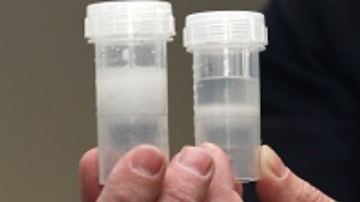Trafi Study Verifies Efficiency Of ATP Ballast Water Monitoring Techniques
Published on by Water Network Research, Official research team of The Water Network in Academic
The Finnish Transport Safety Agency (Trafi) has published a review of methods available for analysing treated ballast water.
It concluded that Adenosine Triphosphate (ATP) or Pulse Amplitude-Modulation (PAM) technologies should be used to detect the effect of ballast water treatment in “a simple, quick, portable and relatively cheap manner”.

Preparation of beads for ATP extraction step, Source: Hellenic Shiping News
Although the study focused primarily on the water conditions and characteristics of the Baltic Sea, it evaluated the efficiency of various test kits to assess their reliability in waters of low salinity and temperature and high turbidity. The objective was to compare the advantages and disadvantages of various methods and to provide recommendations as to the most suitable systems available.
However, while both methods were considered reliable indicative monitoring tools, the Trafi study found that ATP technologies had the “essential benefit” of being able to measure and detect all organism categories (bacteria, >10 to 50 µm) listed in regulation D2 of the BWM Convention. PAM measurements were found “somewhat limited” to detecting only the presence of phytoplankton.
“The benefit of ATP method over PAM fluorometry is the ability to evaluate the concentration of all organism size categories including autotrophic and heterotrophic organisms,” cited the report.
The Trafi study, titled Literature Review of the Indicative Ballast Water Analysis Methods, also provided important recommendations on how best to prevent the over- and under-estimation of organism concentrations during sampling; a problem that can result in an incorrect evaluation of ballast water treatment systems efficiency.
Read full article: Hellenic Shiping News
Media
Taxonomy
- Industrial Wastewater Treatment
- Wastewater Treatment
- Wastewater Collection
- Solid Wastes & Wastewater Recycling
- Ballast Water